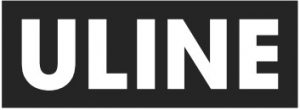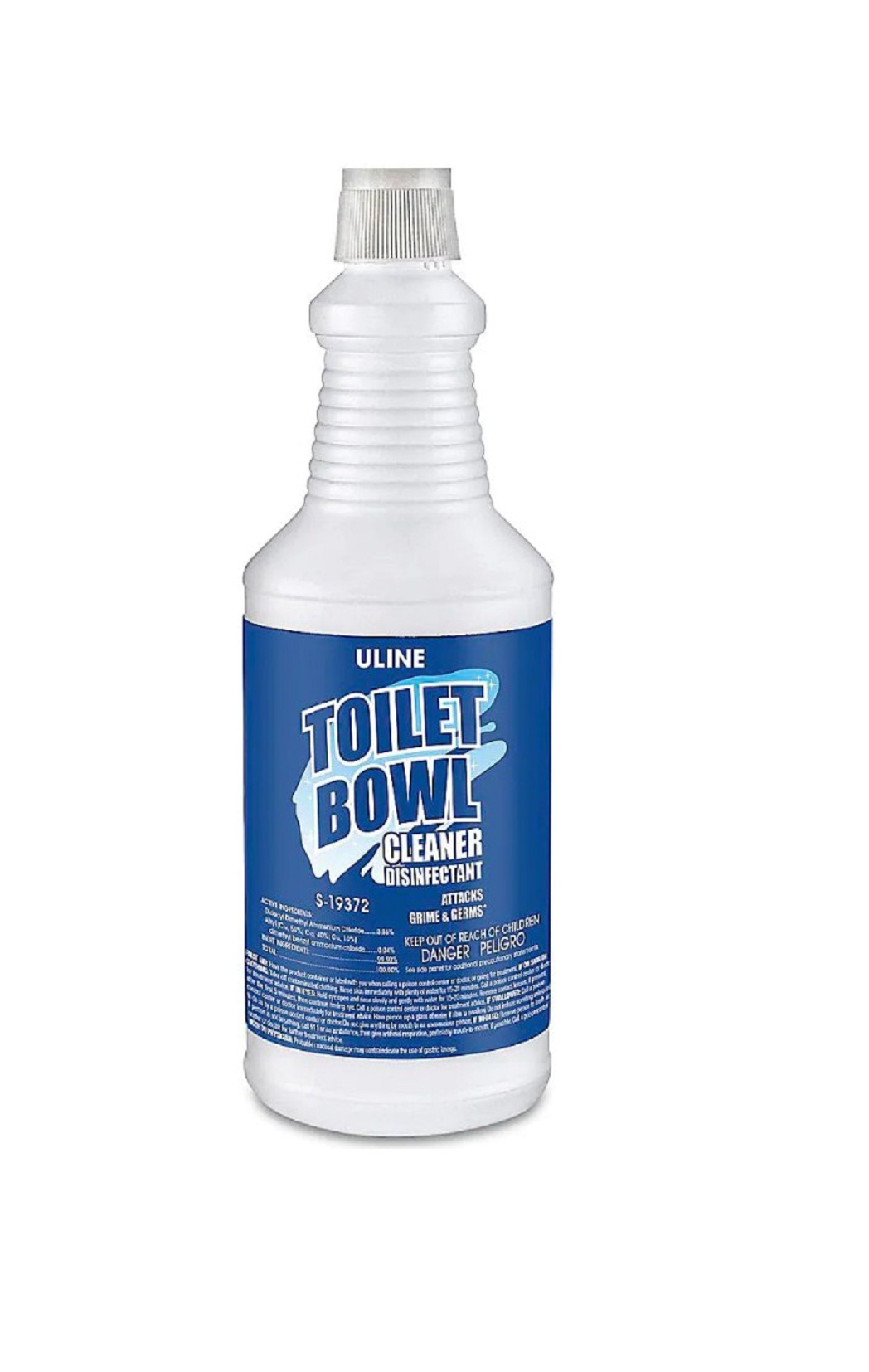ULINE S-19372 Toiler Bowl Cleaner Instructions
PRECAUTIONARY STATEMENTSHAZARDS TO HUMANS AND DOMESTIC ANIMALS
DANGER. Keep out of reach of children. Corrosive. Causes irreversible eye damage and skin burns. Harmful if swallowed. Harmful if absorbed through the skin or inhaled. Avoid breathing spray mist. Do not get into eyes, on skin or on clothing. Wear goggles or face shield, rubber gloves and protective clothing when handling. Wash thoroughly with soap and water after handling and before eating, drinking, using tobacco or using the toilet. Remove contaminated clothing and wash before reuse.GENERAL PRECAUTION AND RESTRICTIONS: DO NOT MIX WITH CHLORINE, BLEACH, AMMONIA CLEANERS OR OTHER HOUSEHOLD CHEMICALS.
PHYSICAL OR CHEMICAL HAZARDS
Do not mix with oxidizers, anionic soaps and detergents. NEVER USE WITH CHLORINE PRODUCTS. Can react to give chlorine gas. If this occurs, flush toilet to remove chemicals and leave the area. Do not return for half an hour. Ventilate if possible. Never use or mix with other cleaners or chemicals. Do not use on any surface that can be damaged by acidic materials. Many surfaces are not resistant to acid.
FIRST AID
Have the product container or label with you when calling a poison control center or doctor or going for treatment. IF ON SKIN OR CLOTHING: Take off contaminated clothing. Rinse skin immediately with plenty of water for 15-20 minutes. Call a poison control center or doctor for treatment advice. IF IN EYES: Hold eye open and rinse slowly and gently with water for 15-20 minutes. Remove contact lenses, if present, after the first 5 minutes, then continue rinsing eye. Call a poison control center or doctor for treatment advice. IF SWALLOWED: Call a poison control center or doctor immediately for treatment advice. Have person sip a glass of water, if able to swallow. Do not induce vomiting unless told to do so by a poison control center or doctor. Do not give anything by mouth to an unconscious person. IF INHALED: Remove person to fresh air. If person is not breathing, call 911 or an ambulance, then give artificial respiration, preferably mouth-to-mouth, if possible. Call a poison control center or doctor for further treatment advice. NOTE TO PHYSICIAN: Probable mucosal damage may contraindicate the use of gastric lavage.
This product for use in: Medical Facilities, Industrial/Commercial Facilities, Institutional Facilities.
DIRECTIONS FOR USE
It is a violation of Federal law to use this product in a manner inconsistent with its labeling.This product is not for use on medical device surfaces. For all surfaces, test on a small area before use. Toilet Bowl and Urinal Disinfection/Cleaner Directions: Remove gross filth prior to disinfection. Empty toilet bowl or urinal and apply solution of 1 to 2 ounces of this product to exposed surfaces including under the rim, with a cloth, mop, sponge or sprayer. Brush or swab thoroughly and allow to stand for 10 minutes and flush. Effective against: Escherichia coli, Serratia marcescens, Enterococcus faecalis Vancomycin Resistant, Enterobacteriaciae extended beta lactamase resistance, Pseudomonas aeruginosa, Salmonella choleraesuis, Shigella dysenteriae, Salmonella typhi, Staphylococcus aureus, Staphylococcus aureus Methicillin resistent (MRSA), Staphylococcus aureus Vancomycin Resistent (VRSA), Community Acquired Methicillin resistent Staphylococcus aureus.
Virucidal* Performance: This product was evaluated in the presence of 5% serum and found to be effective against the following viruses on hard, non-porous environmental surfaces of toilets and urinals: Hepatitis A virus (HAV), Human Immunodeficiency Virus Type 1, Herpes simplex virus type 1, Influenza A Virus, Herpes simplex virus type 2, Rotavirus. *KILLS HIV ON PRECLEANED ENVIRONMENTAL TOILET BOWLS/URINALS PREVIOUSLY SOILED WITH BLOOD/BODY FLUIDS in health care setting or other settings in which there is an expected likelihood of soiling of inanimate toilet bowls/urinals with body fluids and in which the toilet bowls/urinals likely to be soiled with blood or body fluids can be associated with the potential for transmission of human immunodeficiency virus Type I (HIV-1) associated with AIDS. “SPECIAL INSTRUCTIONS FOR CLEANING AND DECONTAMINATION AGAINST HIV-1 ON TOILET BOWLS/URINALS SOILED WITH BLOOD/BODY FLUIDS.” Personal Protection: Specific barrier protection items to be used when handling items soiled with blood or body fluids are disposable latex gloves, gowns, masks or eye coverings. Cleaning Procedure: Blood and other body fluids must be thoroughly cleaned from toilet bowls and urinals before application of the disinfectant. Disposal of Infectious Materials: Blood and other body fluids should be autoclaved and disposed of according to federal, state and local regulations for infectious waste disposal. Contact Time: Leave surface wet for 10 minutes with undiluted solution. Remove gross filth prior to disinfection. Empty toilet bowl or urinal and apply solution of 1 to 2 ounces of this product to exposed surfaces, including under the rim, with a cloth, mop, sponge or sprayer. Brush or swab thoroughly and allow to stand for 10 minutes and flush.
STORAGE AND DISPOSAL
Do not contaminate water, food, or feed by storage and disposal. PESTICIDE STORAGE: Open dumping is prohibited. Store only in original container. Do not reuse empty container. If a leaky container must be contained within another, mark the outer container to identify the contents. Store pesticides away from food, pet food, feed, seed, fertilizers, and veterinary supplies. Keep this product under locked storage sufficient to make it inaccessible to children or persons unfamiliar with its proper use. PESTICIDE DISPOSAL: Pesticide wastes are acutely hazardous. Improper disposal of excess pesticide, spray mixture or rinsate is a violation of Federal Law. If these wastes cannot be disposed of by use according to label instructions, contact your State Pesticide or Environmental Control Agency, or the Hazardous Waste Representative at the nearest EPA Regional Office for guidance. CONTAINER HANDLING DISPOSAL: Non-refillable container. Do not reuse this container to hold materials other than pesticides or diluted pesticides. Triple rinse (or equivalent). After emptying and cleaning, it may be allowable to temporarily hold rinsate or other pesticide-related materials in the container. Contact your state regulatory agency to determine allowable practices in your state. Offer for recycling if available or puncture and dispose in a sanitary landfill, or by other procedures approved by state and local authorities. If rinsate cannot be used, follow pesticide disposal instructions. If not triple rinsed, these containers are acute hazardous wastes and must be disposed in accordance with local, state and federal regulations. RESIDUE REMOVAL INSTRUCTIONS: Triple rinse container (or equivalent) promptly after emptying. Triple rinse as follows: Fill the container 1/4 full with water and recap. Shake for 10 seconds. Follow Pesticide Disposal instructions for rinsate disposal. Drain for 10 seconds after the flow begins to drip. Repeat this procedure two more times.
Contact Us
Phone: 1-800-295-5510Web: uline.com

[xyz-ips snippet=”download-snippet”]

